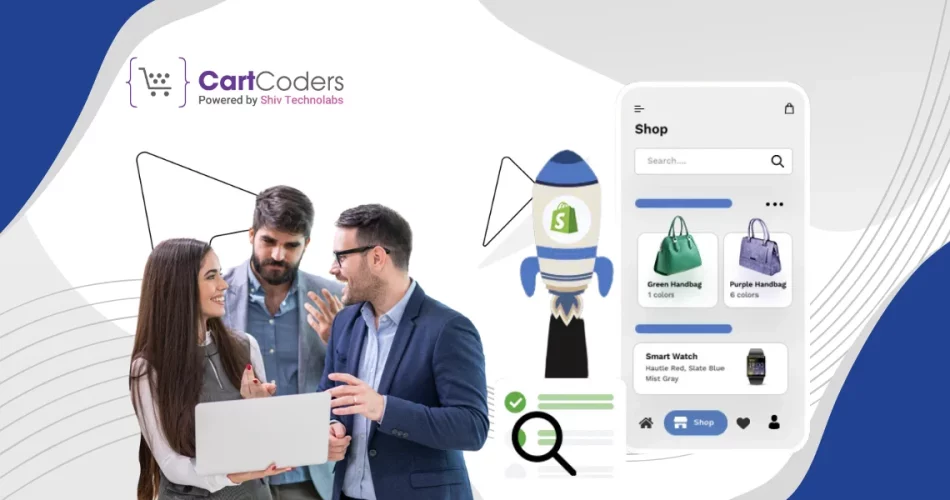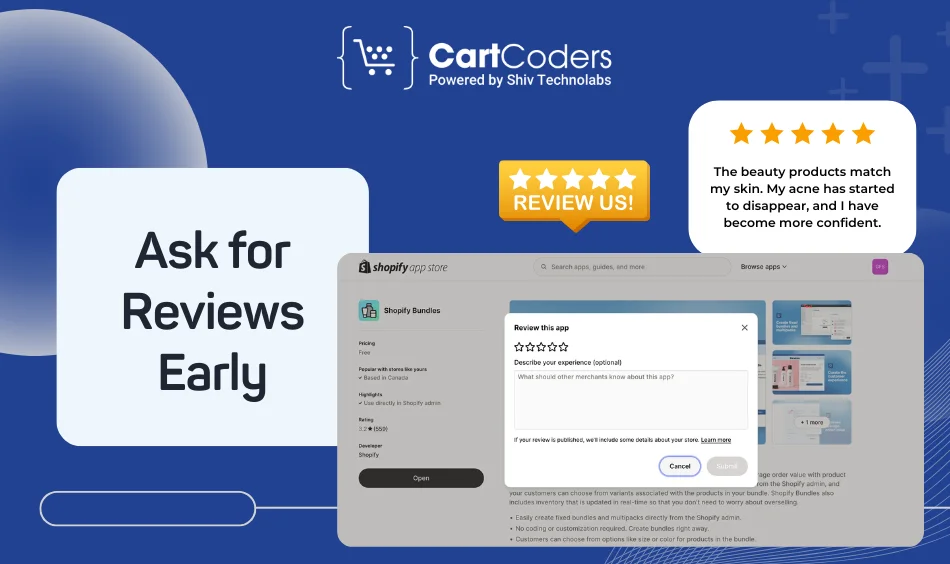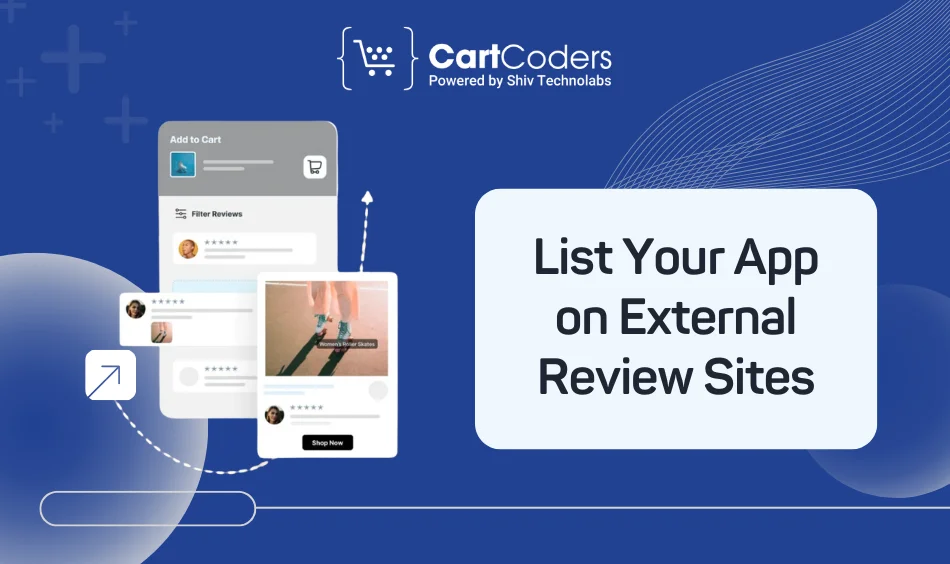Custom Engagement Solutions
Unlock tailored solutions with a free, no-obligation strategy session.
Expert Developers & Engineers on Demand
Scale Your Team with Skilled IT Professionals
Expert Guidance for Digital Transformation
Custom Engagement Solutions
Unlock tailored solutions with a free, no-obligation strategy session.
Expert Developers & Engineers on Demand
Scale Your Team with Skilled IT Professionals
Expert Guidance for Digital Transformation
Category
Shopify solutions for every industry!
We bring Shopify expertise to every industry—custom solutions, faster results!
Custom Engagement Solutions
Unlock tailored solutions with a free, no-obligation strategy session.
Expert Developers & Engineers on Demand
Scale Your Team with Skilled IT Professionals
Expert Guidance for Digital Transformation
Power Your Shopify Store with CartCoders Apps
Boost sales, drive traffic, and build loyalty with high-converting apps and top-rated support.
Data-Driven
Success Stories
See What We Built and How it Worked!
Latest Blogs & Insights
Shopify insights that keep you ahead.
Latest News & Announcements
Milestones that push our progress to new heights
Proud to Be Recognized as a Top eCommerce Workplace
Where Global Talent Meets Shopify Brilliance
 INDIA
INDIA
 contact@cartcoders.com
contact@cartcoders.com
7th Floor, PV Enclave, Opp. Courtyard by Marriott, Off Sindhu Bhavan Road, Bodakdev, Ahmedabad, Gujarat 380054
 USA
USA
 contact@cartcoders.com
contact@cartcoders.com
5119 E Coolbrook Ave, Scottsdale, AZ 85254
 CANADA
CANADA
 contact@cartcoders.com
contact@cartcoders.com
3120, Kirwin avenue Mississauga L5A3R2
 AUSTRALIA
AUSTRALIA
 contact@cartcoders.com
contact@cartcoders.com
2/23 Foster Street, Surry Hills, NSW 2010 Australia.
Get in Touch with Cartcoders
We’re Here to Help You Achieve Your Goals
Global Offices & Dev Hubs
 INDIA
INDIA
 contact@cartcoders.com
contact@cartcoders.com
7th Floor, PV Enclave, Opp. Courtyard by Marriott, Off Sindhu Bhavan Road, Bodakdev, Ahmedabad, Gujarat 380054
 USA
USA
 contact@cartcoders.com
contact@cartcoders.com
5119 E Coolbrook Ave, Scottsdale, AZ 85254
 CANADA
CANADA
 contact@cartcoders.com
contact@cartcoders.com
3120, Kirwin avenue, Mississauga L5A3R2
 AUSTRALIA
AUSTRALIA
 contact@cartcoders.com
contact@cartcoders.com
2/23 Foster Street, Surry Hills, NSW 2010 Australia.

So, you’ve built a public app for Shopify. It’s live. It works well. But hardly anyone’s using it. Sound familiar?
Publishing the app is just step one. Getting people to find it, install it, and keep it—that’s where things usually get stuck. The good news? You don’t need a huge budget or a marketing agency to start getting real users.
Below are 8 ways you can promote your Shopify public app right now. No fluff. Just real, human-tested methods that help your app get noticed.

Simple ways to get real installs without spending a fortune.
This is where most store owners will meet your app for the first time. So don’t treat it like an afterthought.
Make sure:
Use real search terms that store owners might type in. And don’t overpromise—just say what your app does in plain terms.

People trust apps with feedback. No reviews? That’s a red flag.
Here’s how to change that:
Even 3–5 good reviews can make a big difference in your first few months.
Don’t hide in your dashboard. Get out there.
Real app growth often starts with real conversations. Try:
Answer questions, share advice, and drop your app only when it’s helpful, not as spam. People remember who helped them.
From idea to install-ready product, we’ve got your app journey covered.


This helps in two ways—Google picks it up, and users see your app in action.
Write a blog post that:
Don’t stuff keywords. Just talk like you would to a Shopify store owner.

Places like G2, Capterra, and AlternativeTo can drive traffic even if you’re new.
Steps to follow:
These listings can rank in search and drive clicks over time.
Plenty of people write or make videos about Shopify tools. If your app solves a specific issue, it’s worth sharing.
How to approach:
Skip the generic PR email. Keep it short, human, and honest.
People love trying things when there’s less risk.
Try:
Promote the offer on your site, in forums, or through email lists. Just be clear about what’s included.
Your current users can help you grow—if you give them a reason to share.
Ideas that work:
This builds word-of-mouth without needing ad spend.
If you’re building a Shopify app or need help getting installs, CartCoders can support your entire journey—from the first idea to user feedback.
We help with:
Want to build a Shopify app that stands out? Reach out to us today. We’ll handle the tech while you grow the business.
You don’t need a big ad budget or a press release to start getting installs.
Instead:
Promotion is just part of building a successful app. The rest? Listening, improving, and staying consistent.You’ve got this. Get in touch with CartCoders today!
Categorized in:
Tagged in:
Shopify AppsAs the CTO at Shiv Technolabs & CartCoders, I am liable for instigating, planning, integrating, and implementing the organization's strategic orientation. I gather the most significant tech news in addition to sharing the information I gained while serving as the CTO of Shiv Technolabs, a renowned web and mobile app development company. I am pleased to answer questions as a most valuable expert for Shiv Technolabs Private Limited and to share my experience. I offer a keen insider's perspective on technical advancements.
View All Articles
Projects delivered in 15+ industries.
95% retention rate, building lasting partnerships.


Serving clients across 25+ countries.
60+ pros | 10+ years of experience.
